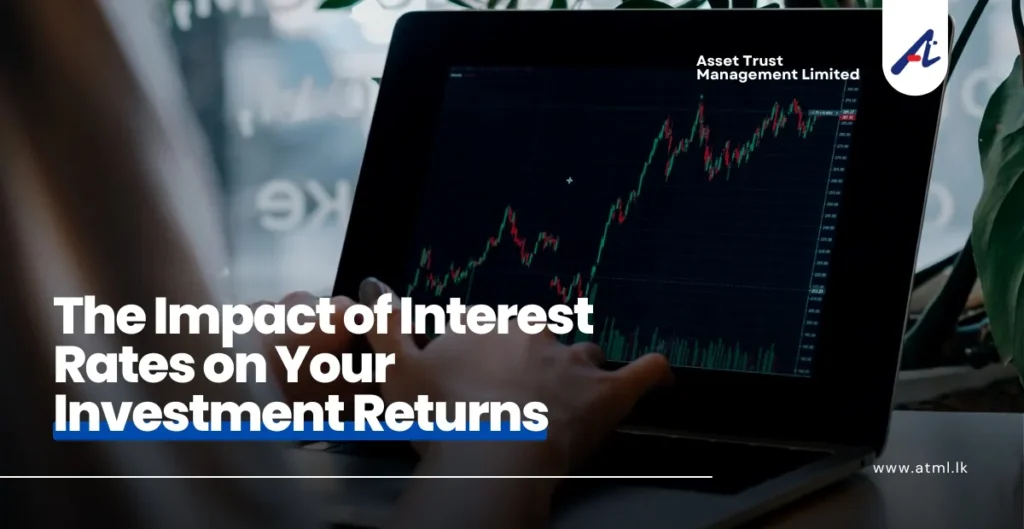Interest rates are one of the most significant factors that can impact the performance of your investments. Whether you’re an experienced investor or just getting started, understanding how interest rates influence different asset classes is essential for making informed investment decisions. This article will explore the relationship between interest rates and various investments, offering insights into how changes in rates affect everything from stocks to bonds, real estate, and beyond.

What Are Interest Rates?
Interest rates represent the cost of borrowing money, typically expressed as a percentage. When the central bank (such as the Federal Reserve in the U.S.) changes interest rates, it directly influences the cost of loans for consumers and businesses. These rate changes ripple through the economy, affecting everything from mortgages to credit card debt to the returns on investments.
How Do Interest Rates Affect Different Types of Investments?
Interest rates have a wide-reaching effect on various types of investments. Let’s break down how they influence key asset classes:
1. Bonds
When interest rates rise, the value of existing bonds typically falls. This happens because newly issued bonds will offer higher yields, making older bonds with lower rates less attractive to investors. Conversely, when interest rates fall, the value of existing bonds tends to increase, as their fixed interest payments become more appealing relative to new bonds issued at lower rates.
2. Stocks
The effect of interest rates on stocks can be complex. Generally, when interest rates rise, borrowing costs for companies increase, potentially hurting their profitability and stock prices. Higher rates may also make bonds and other fixed-income investments more attractive compared to equities. However, some sectors, such as financial institutions, may benefit from higher rates as they can charge more for loans.
3. Real Estate
Interest rates play a significant role in the real estate market. When rates are low, borrowing costs for mortgages decrease, leading to increased demand for property. As a result, real estate prices may rise. On the other hand, when rates increase, mortgage rates climb, reducing the affordability of homes and possibly causing a slowdown in the housing market.
4. Commodities
Commodities, such as gold, oil, and agricultural products, are affected by interest rates in a few ways. Higher interest rates tend to strengthen the national currency, which can negatively impact the prices of commodities priced in that currency. Additionally, when rates rise, investors may prefer higher-yielding assets, like bonds, over commodities.
5. Savings Accounts and CDs
Savings accounts and certificates of deposit (CDs) benefit directly from rising interest rates. As rates increase, banks offer higher interest on deposits, which can be an attractive option for conservative investors looking for safe, guaranteed returns.
The Role of Central Banks and Interest Rate Decisions
Central banks, such as the Federal Reserve, play a crucial role in setting interest rates. By adjusting rates, central banks can influence inflation, economic growth, and employment. For example, when the economy is growing too fast and inflation is rising, a central bank might increase interest rates to cool down the economy. Conversely, during periods of economic slowdown, central banks may lower rates to encourage borrowing and investment.
How Should You Adjust Your Investment Strategy Based on Interest Rates?
Understanding the relationship between interest rates and your investments allows you to make strategic decisions. If you know rates are likely to rise, you might want to consider:
- Reducing exposure to bonds: As interest rates rise, the value of existing bonds tends to fall.
- Exploring dividend stocks: High-quality dividend-paying stocks can offer more stability and yield in a rising rate environment.
- Considering shorter-term bonds: These are less sensitive to interest rate increases.
- Reviewing your real estate investments: Rising rates can impact home prices and the cost of financing.
If interest rates are expected to decrease, you may want to:
- Increase bond exposure: Falling rates generally boost the value of bonds.
- Focus on growth stocks: Lower interest rates make borrowing cheaper for businesses, which may spur expansion.
- Consider refinancing loans: If you have outstanding loans, a drop in interest rates may present an opportunity for refinancing at lower costs.
Read More:https://wealthfitlife.com/top-alternative-investments-to-boost-your-portfolio/
Conclusion
Interest rates are a fundamental driver of investment performance across different asset classes. By understanding how changes in interest rates impact bonds, stocks, real estate, and other investments, you can make more informed decisions that align with your financial goals. Monitoring interest rate trends and central bank policies is essential for adapting your investment strategy in a constantly changing market environment.
FAQs
- How do interest rates impact the stock market? Rising interest rates can negatively impact stock prices, especially for companies with high debt. Lower rates tend to stimulate economic activity, which can boost stock market performance.
- Do interest rates affect all types of bonds equally? No, bonds with longer maturities are more sensitive to interest rate changes than short-term bonds. Longer-term bonds lose more value when rates rise and gain more value when rates fall.
- Can rising interest rates hurt real estate investments? Yes, higher interest rates increase mortgage rates, which can reduce the affordability of real estate and lead to slower price growth or even a decline in home values.
- Why do central banks change interest rates? Central banks adjust interest rates to control inflation, stabilize the economy, and promote employment. They raise rates to slow down inflation and lower rates to stimulate economic activity.
- What happens to commodities when interest rates rise? Rising interest rates generally strengthen the currency, which can lower the price of commodities. Higher rates may also make investments in commodities less attractive compared to bonds or stocks.
- How can I protect my portfolio from rising interest rates? To protect your portfolio from rising rates, consider reducing bond exposure, focusing on short-term bonds, and investing in sectors that benefit from higher rates, such as financials.
- Are savings accounts affected by interest rates? Yes, savings accounts and CDs typically offer higher interest rates when the central bank raises rates, giving savers a better return on their deposits.
- How do rising interest rates impact consumer spending? Higher interest rates increase the cost of borrowing, which can reduce consumer spending on goods and services. This can lead to slower economic growth.
- What is the relationship between interest rates and inflation? Central banks may raise interest rates to combat inflation. By increasing rates, borrowing becomes more expensive, which can reduce demand for goods and services and help bring down inflation.
- How can I benefit from falling interest rates? Falling interest rates can boost bond prices, increase stock market growth, and reduce borrowing costs. Investors can benefit by increasing exposure to bonds or growth stocks in such an environment.
Understanding how interest rates affect your investments is crucial for building a resilient portfolio. By staying informed and adjusting your strategy accordingly, you can navigate the challenges and opportunities that interest rate changes bring.
